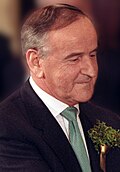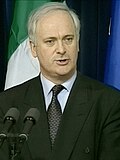| |||||||||||||||||||||||||||||||||||||||||||||||||||||||||||||||||||||||||||||||||||||||||||||||||||||||||||||||||||||||||||||||||||||||||||||
15 seats to the European Parliament | |||||||||||||||||||||||||||||||||||||||||||||||||||||||||||||||||||||||||||||||||||||||||||||||||||||||||||||||||||||||||||||||||||||||||||||
|---|---|---|---|---|---|---|---|---|---|---|---|---|---|---|---|---|---|---|---|---|---|---|---|---|---|---|---|---|---|---|---|---|---|---|---|---|---|---|---|---|---|---|---|---|---|---|---|---|---|---|---|---|---|---|---|---|---|---|---|---|---|---|---|---|---|---|---|---|---|---|---|---|---|---|---|---|---|---|---|---|---|---|---|---|---|---|---|---|---|---|---|---|---|---|---|---|---|---|---|---|---|---|---|---|---|---|---|---|---|---|---|---|---|---|---|---|---|---|---|---|---|---|---|---|---|---|---|---|---|---|---|---|---|---|---|---|---|---|---|---|---|
| Turnout | 1,157,296 (44.0% | ||||||||||||||||||||||||||||||||||||||||||||||||||||||||||||||||||||||||||||||||||||||||||||||||||||||||||||||||||||||||||||||||||||||||||||
| |||||||||||||||||||||||||||||||||||||||||||||||||||||||||||||||||||||||||||||||||||||||||||||||||||||||||||||||||||||||||||||||||||||||||||||
|
Members of the European Parliament for Ireland | ||||||||||||||||||||||||||
|
||||||||||||||||||||||||||
| Women | ||||||||||||||||||||||||||
The 1994 European Parliament election in Ireland was the Irish component of the 1994 European Parliament election. The election was conducted under the single transferable vote. Local elections were held on the same day for borough councils, urban district councils and town commissioners.
Campaign
[edit]In 1992, a general election in Ireland led to the Labour Party's best results to date, paving the way for Dick Spring to lead his party into coalition with Fianna Fáil. The 1994 local and European elections were seen in some quarters as a mid-term report on that coalition's performance. The strong result by the Green Party in particular was interpreted as a warning that left-leaning middle class voters were moving away from Labour.[1]
The election was notable for how some parties ran "parachute candidates" (like Orla Guerin for Labour) who did not resonate with voters as well as incumbent, grassroots campaigners.[2]
The popularity of President Mary Robinson led to parties presenting more female candidates than usual, four of whom became MEPs on this occasion.[3]
Results
[edit]| Party | European party | Party Leader | 1st Pref Vote | % | ±% | Seats | ± | |
|---|---|---|---|---|---|---|---|---|
| Fianna Fáil | EDA | Albert Reynolds | 398,066 | 35.0 | +3.5 | 7 | ||
| Fine Gael | EPP | John Bruton | 276,095 | 24.3 | +2.7 | 4 | ||
| Green Party | Green Group | none | 90,046 | 7.9 | +4.2 | 2 | ||
| Labour Party | PES | Dick Spring | 124,972 | 11.0 | +1.5 | 1 | ||
| Progressive Democrats | ELDR | Mary Harney | 73,696 | 6.5 | −5.5 | 0 | ||
| Democratic Left | Proinsias De Rossa | 39,706 | 3.5 | +3.5 | 0 | New | ||
| Sinn Féin | Gerry Adams | 33,823 | 3.0 | +0.8 | 0 | |||
| Workers' Party | Marian Donnelly | 22,100 | 1.9 | −5.8 | 0 | |||
| Independent | 78,986 | 6.9 | −1.7 | 1 | ||||
| Total | 1,137,490 | 100.0 | — | 15 | ||||
MEPs elected
[edit]Voting details
[edit]
| Constituency | Electorate | Turnout | Spoilt | Valid Poll | Quota | Seats | Candidates |
|---|---|---|---|---|---|---|---|
| Connacht–Ulster | 496,352 | 237,601 (47.8%) | 4,971 (2.1%) | 232,630 | 58,158 | 3 | 9 |
| Dublin | 755,486 | 280,761 (37.2%) | 2,917 (1.1%) | 277,844 | 55,569 | 4 | 15 |
| Leinster | 624,561 | 269,044 (43.1%) | 6,599 (2.4%) | 262,445 | 52,490 | 4 | 12 |
| Munster | 755,176 | 369,890 (48.9%) | 5,319 (1.4%) | 364,571 | 72,915 | 4 | 16 |
| Total | 2,631,575 | 1,157,296 (43.9%) | 19,806 (1.7%) | 1,137,490 | — | 15 | 52 |
See also
[edit]- List of members of the European Parliament for Ireland, 1994–99 – List ordered by constituency
References
[edit]- ^ Morahan, Jim (13 June 1994). "Green Party's McKenna Is The Toast of Dublin". Cork Examiner. p. 11.
- ^ McNally, Frank. "Searching for the dream candidate". The Irish Times. Retrieved 26 March 2021.
- ^ Downing, John (21 July 1994). "Women Fine-Tune A Powerbase in European Politics". Evening Herald. p. 89.





